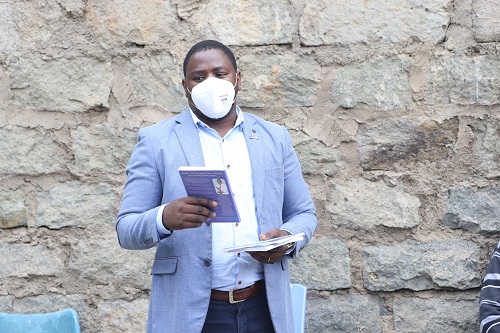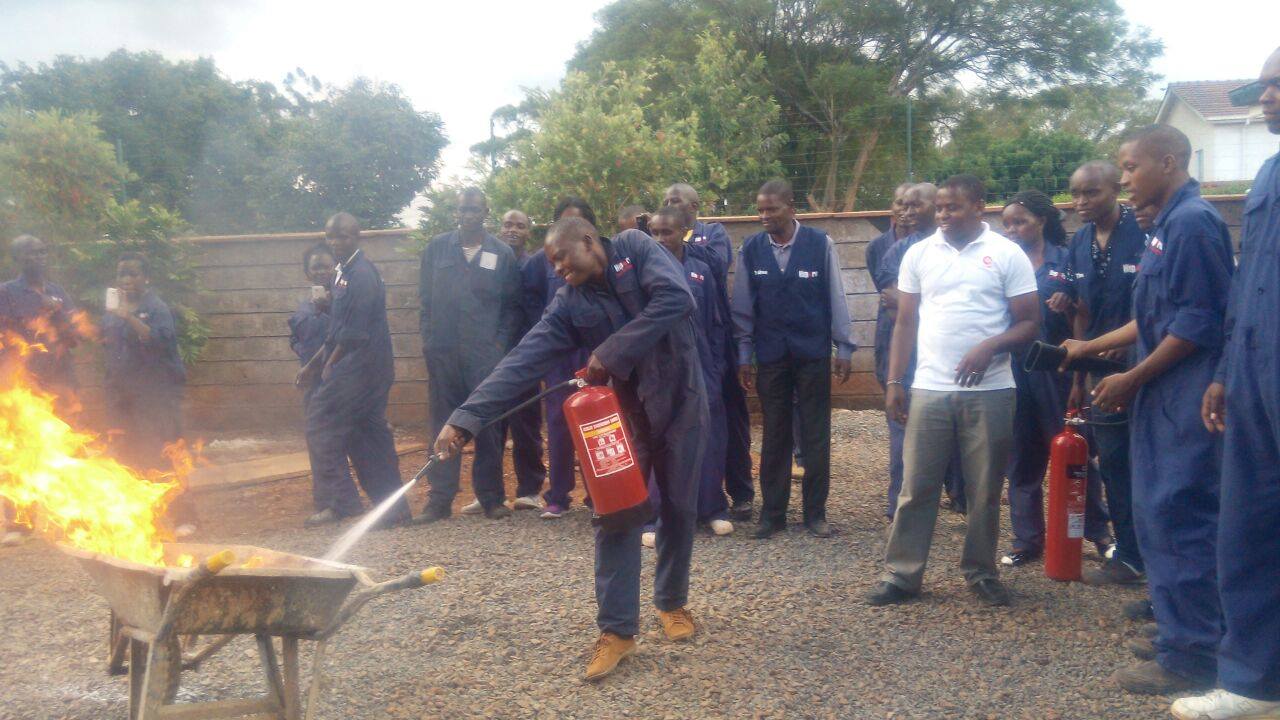In the modern workplace, safety is a critical priority that impacts productivity, employee well-being, and organizational success. I am Ambassador Steve Mbugua, the globally renowned Ambassador of Safety, dedicated to advancing workplace safety standards across industries. In this article, we delve into the fundamental aspects of workplace safety, exploring effective strategies and best practices that every organization should implement. From risk assessments and hazard management to safety training and compliance, we cover essential elements that contribute to a safer work environment. By prioritizing workplace safety, organizations can foster a culture of security and confidence, ultimately driving greater efficiency and success.
Introduction to Workplace Safety
Workplace safety is a critical aspect of any organization, aiming to ensure that the work environment is safe, healthy, and conducive to productivity. It involves implementing policies, practices, and procedures to prevent accidents, injuries, illnesses, and near misses that could harm employees. The importance of workplace safety cannot be overstated, as it directly impacts employee well-being, organizational efficiency, and regulatory compliance.
Types of Workplace Accidents, Incidents, Illnesses, and Near Misses
1. Slips, Trips, and Falls
o Accident: An employee slipping on a wet floor, resulting in a broken arm.
o Incident: A worker tripping over an uneven surface but not getting injured.
o Illness: Long-term back pain due to repetitive strain from improper lifting techniques.
o Near Miss: An employee catching themselves before falling on a wet surface.
2. Machinery Accidents
o Accident: A worker losing a finger due to improper use of a cutting machine.
o Incident: A machine malfunction causing minor burns.
o Illness: Hearing loss due to prolonged exposure to loud machinery.
o Near Miss: An employee narrowly avoiding being caught in moving machinery parts.
3. Chemical Exposure
o Accident: A chemical spill causing burns to multiple employees.
o Incident: A minor leak of a hazardous substance with no injuries.
o Illness: Respiratory issues from long-term exposure to toxic fumes.
o Near Miss: Detecting a gas leak before any exposure occurs.
4. Electrical Hazards
o Accident: An employee suffering an electric shock due to faulty wiring.
o Incident: A short circuit causing a small fire, quickly extinguished.
o Illness: Chronic headaches from poor indoor air quality caused by electrical equipment.
o Near Miss: Sparking wires discovered before causing a fire.
5. Ergonomic Injuries
o Accident: A worker developing carpal tunnel syndrome from repetitive tasks.
o Incident: Temporary muscle strain from improper posture.
o Illness: Chronic back pain from inadequate workstation setup.
o Near Miss: Correcting posture before experiencing strain during a task.
6. Confined Spaces
o Accident: An employee collapsing due to lack of oxygen in a confined space.
o Incident: A worker experiencing dizziness but safely exiting a confined space.
o Illness: Long-term respiratory issues from repeated exposure to confined spaces without proper ventilation.
o Near Miss: Detecting unsafe gas levels before entry into a confined space.
7. Fire and Explosions
o Accident: An explosion in a factory causing severe injuries to several workers.
o Incident: A small fire in the kitchen area, extinguished without injuries.
o Illness: Lung damage from inhaling smoke during a fire.
o Near Miss: Fire alarm sounding, allowing evacuation before a fire spreads.
8. Workplace Violence
o Accident: An employee being physically assaulted by a coworker.
o Incident: A verbal altercation that is quickly diffused.
o Illness: Post-traumatic stress disorder (PTSD) from witnessing a violent act.
o Near Miss: Identifying and addressing escalating tensions before they result in violence.
9. Fatigue-Related Incidents
o Accident: A worker falling asleep at the wheel of a company vehicle, causing a crash.
o Incident: Near-miss collision due to driver drowsiness.
o Illness: Chronic fatigue from long working hours without adequate rest.
o Near Miss: Recognizing signs of fatigue and taking a break before an incident occurs.
10. Manual Handling
o Accident: An employee suffering a hernia from lifting heavy objects incorrectly.
o Incident: Minor strain from moving boxes.
o Illness: Chronic back pain from poor lifting techniques.
o Near Miss: Adjusting lifting technique before experiencing strain.
11. Environmental Hazards
o Accident: A worker being struck by falling debris from a construction site.
o Incident: Exposure to extreme temperatures causing mild hypothermia.
o Illness: Skin conditions from prolonged exposure to hazardous environments.
o Near Miss: Identifying unstable structures before they cause harm.
12. Biohazards
o Accident: A healthcare worker contracting a serious infection from a needle stick injury.
o Incident: Minor exposure to a biohazardous material, quickly contained.
o Illness: Chronic respiratory issues from repeated exposure to biohazardous agents.
o Near Miss: Identifying and addressing biohazard risks before exposure.
Detailed Explanations
1. Slips, Trips, and Falls
Introduction: These are the most common workplace accidents and can occur in any industry. They result from wet floors, uneven surfaces, loose cables, or poor housekeeping.
Prevention:
• Implement regular cleaning schedules.
• Use non-slip mats and proper signage for wet floors.
• Ensure proper footwear.
• Conduct regular inspections to identify and mitigate trip hazards.
Example Scenarios:
• A worker slipping on an unmarked wet floor and breaking an arm.
• Tripping over loose cables but catching oneself before falling.
2. Machinery Accidents
Introduction: Working with machinery poses significant risks, including entanglement, crushing, and cuts.
Prevention:
• Regular maintenance and inspections of machinery.
• Providing proper training and PPE.
• Implementing lockout/tagout procedures.
Example Scenarios:
• Losing a finger due to improper use of a cutting machine.
• Narrowly avoiding being caught in moving parts due to awareness and quick action.
3. Chemical Exposure
Introduction: Handling chemicals requires strict protocols to avoid burns, respiratory issues, and contamination.
Prevention:
• Proper labeling and storage of chemicals.
• Providing training on handling and emergency procedures.
• Using appropriate PPE and ventilation systems.
Example Scenarios:
• Burns from a chemical spill.
• Detecting a gas leak and preventing exposure.
Latest Trends in Workplace Safety
1. Wearable Safety Technology: Smart PPE that monitors vital signs and environmental conditions.
2. Virtual Reality (VR) Training: Immersive training experiences to simulate hazardous scenarios.
3. AI and Machine Learning: Predictive analytics to identify and mitigate potential risks.
4. Remote Monitoring: Using IoT devices to continuously monitor safety conditions.
5. Mental Health Initiatives: Programs addressing stress, anxiety, and mental health in the workplace.
6. Ergonomics and Exoskeletons: Enhancing physical support for employees engaged in repetitive tasks.
7. Enhanced PPE: Advanced materials and designs for better protection and comfort.
8. Data-Driven Safety Programs: Leveraging big data to improve safety decision-making.
9. Diversity and Inclusion in Safety: Tailoring safety programs to diverse workforces.
10. Safety Apps: Mobile applications providing real-time safety information and reporting tools.
11. Wellness Programs: Integrating health and wellness into safety protocols.
12. Sustainability in Safety: Eco-friendly practices in safety equipment and protocols.
13. Telemedicine for Injuries: Remote medical consultations for workplace injuries.
14. Crisis Management Tools: Advanced planning and response tools for emergencies.
15. Safety Culture Assessment Tools: Tools to evaluate and improve organizational safety culture.
Examples of Times Workplace Safety Went Wrong
1. Chernobyl Disaster (1986): Nuclear plant explosion due to safety system flaws and human error.
2. Deepwater Horizon Oil Spill (2010): Offshore drilling rig explosion due to safety neglect.
3. Bhopal Gas Tragedy (1984): Gas leak in India due to poor maintenance and safety standards.
4. Rana Plaza Collapse (2013): Building collapse in Bangladesh due to ignored safety warnings.
5. Texas City Refinery Explosion (2005): Explosion at BP refinery due to equipment failure and safety violations.
6. Triangle Shirtwaist Factory Fire (1911): Deadly fire due to locked exits and lack of fire safety.
7. Piper Alpha Disaster (1988): Offshore oil platform explosion due to safety system failures.
8. West Fertilizer Plant Explosion (2013): Explosion in Texas due to improper storage of chemicals.
9. Imperial Sugar Refinery Explosion (2008): Explosion in Georgia due to dust accumulation and lack of safety measures.
10. Upper Big Branch Mine Disaster (2010): Mine explosion in West Virginia due to poor ventilation and safety violations.
11. Lac-Mégantic Rail Disaster (2013): Train derailment and explosion in Canada due to inadequate safety measures.
12. Fukushima Daiichi Nuclear Disaster (2011): Nuclear meltdown in Japan due to tsunami and inadequate safety precautions.
Things to Look At or Do to Ensure a Safe Workplace
1. Conduct Regular Risk Assessments: Identify and mitigate potential hazards.
2. Implement Comprehensive Training Programs: Educate employees on safety protocols.
3. Ensure Proper Use of PPE: Provide and enforce the use of appropriate protective gear.
4. Maintain Clean and Organized Workspaces: Prevent slips, trips, and falls.
5. Install and Maintain Safety Equipment: Ensure fire extinguishers, alarms, and first aid kits are accessible and functional.
6. Promote Ergonomic Workstations: Prevent musculoskeletal disorders.
7. Conduct Regular Safety Drills: Prepare for emergencies.
8. Establish Clear Safety Policies: Communicate and enforce safety rules.
9. Encourage Reporting of Hazards: Create a culture of open communication.
10. Implement Lockout/Tagout Procedures: Ensure safe maintenance of equipment.
11. Monitor Environmental Conditions: Control temperature, noise, and air quality.
12. Use Signage and Labels: Clearly mark hazards and safety equipment.
13. Provide Access to Safety Data Sheets: Inform employees about hazardous substances.
14. Ensure Adequate Lighting: Prevent accidents in poorly lit areas.
15. Conduct Regular Inspections: Identify and address safety issues.
16. Implement Fatigue Management Programs: Prevent accidents due to tiredness.
17. Promote Mental Health: Address stress and mental health issues.
18. Ensure Safe Use of Machinery: Provide training and maintenance.
19. Promote a Safety Culture: Encourage safety-first attitudes.
20. Use Technology for Safety Monitoring: Implement IoT and wearable devices.
21. Evaluate and Improve Continuously: Regularly review and update safety protocols.
Laws or Regulations That Apply at a Workplace to Build a Culture of Safety
1. Occupational Safety and Health Act (OSHA): US law ensuring workplace safety and health standards.
2. Health and Safety at Work Act (HSWA) 1974: UK legislation for workplace safety.
3. European Framework Directive on Safety and Health at Work (1989): EU-wide safety standards.
4. Canadian Labour Code Part II: Regulations for occupational health and safety in Canada.
5. Australian Work Health and Safety Act 2011: National legislation for workplace safety in Australia.
6. Mine Safety and Health Act (MSHA): US law governing mine safety.
7. Control of Substances Hazardous to Health Regulations (COSHH): UK regulations for handling hazardous substances.
8. Fire Precautions Act 1971: UK law for fire safety in the workplace.
9. Factories Act 1948: Indian legislation for workplace safety in factories.
10. Construction (Design and Management) Regulations (CDM): UK regulations for construction site safety.
11. Workplace (Health, Safety and Welfare) Regulations 1992: UK regulations for general workplace conditions.
12. Chemical Safety and Hazard Investigation Board (CSB): US agency overseeing chemical safety standards.
In conclusion, workplace safety is a vital component of any successful organization. As the Ambassador of Safety, I have emphasized the importance of proactive risk management, comprehensive safety training, and a culture that prioritizes employee well-being. By implementing these strategies, organizations can reduce accidents, enhance compliance, and create a supportive environment where employees thrive. Let us commit to elevating workplace safety standards and working together to ensure a safer, more productive future for all. By doing so, we not only protect our most valuable assets—our people—but also contribute to the long-term success and resilience of our organizations.
READ MORE
Workplace Safety Video
Largest Safety Company
BUILDING A CULTURE OF SAFETY
Conducting Safety Training, seminars, conferences and workshops



















